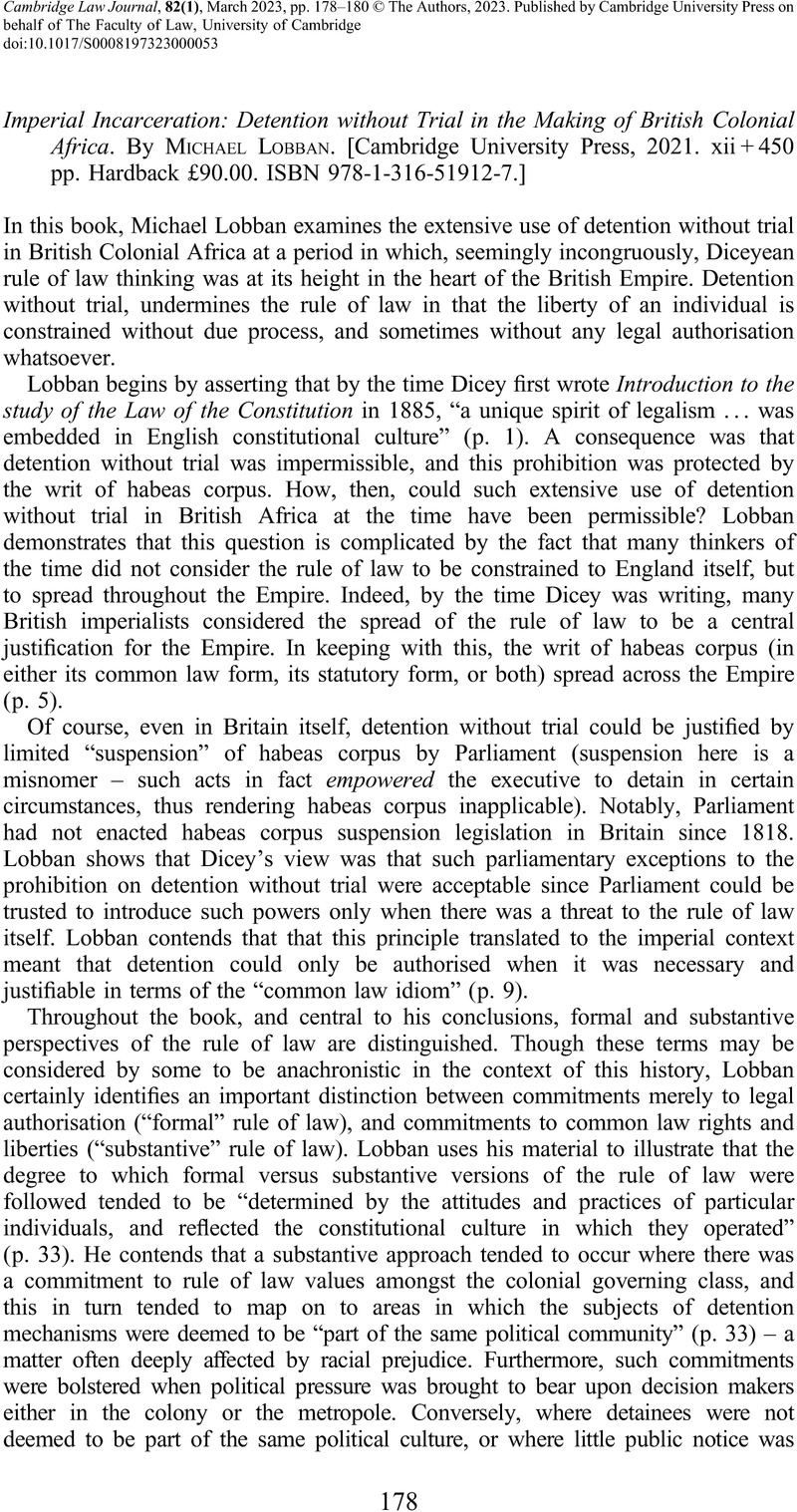No CrossRef data available.
Article contents
Imperial Incarceration: Detention without Trial in the Making of British Colonial Africa. By Michael Lobban. [Cambridge University Press, 2021. xii + 450 pp. Hardback £90.00. ISBN 978-1-316-51912-7.]
Review products
Imperial Incarceration: Detention without Trial in the Making of British Colonial Africa. By Michael Lobban. [Cambridge University Press, 2021. xii + 450 pp. Hardback £90.00. ISBN 978-1-316-51912-7.]
Published online by Cambridge University Press: 26 April 2023
Abstract
An abstract is not available for this content so a preview has been provided. Please use the Get access link above for information on how to access this content.

Information
- Type
- Book Review
- Information
- Copyright
- Copyright © The Authors, 2023. Published by Cambridge University Press on behalf of The Faculty of Law, University of Cambridge

